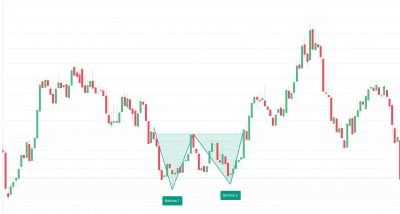In this current volatile market environment, understanding price movements and volatility is essential for all market participants. One of the key technical indicators that can significantly help a trader in quantifying price volatility is Average True Range (ATR). In this article, we will delve into this indicator, its calculations, and how it can be effectively used in your trading strategy.
It is important that you understand the concepts of Range and True Range (TR) before you proceed with Average True Range (ATR). You can read this article to understand Range and True Range.
Average True Range (ATR)
Now that we have a grasp of True Range, let’s discuss Average True Range (ATR). ATR is an essential indicator that measures a market’s volatility over a specified period. It is not a trading signal in itself, but it provides valuable input that traders can use to adapt their strategies and risk management.
The ATR calculation involves smoothing the True Range values over a period (Default Value -14 periods) to provide a more easily interpretable indicator. The formula for ATR is as follows:
ATR = [(Previous ATR * (n – 1)) + Current TR] / n
n = the selected period (Default: 14)
Previous ATR = The ATR from the previous candle
Current TR = True Range for the current candle

Here are some specific examples of how ATR can be used:
Volatility Assessment:
When the range is increasing, it indicates that the market is becoming more volatile and that the trend is likely to continue. Similarly, when the range is decreasing, it indicates that the market is becoming less volatile and that the trend may be coming to an end.

Example: Interpreting the ATR is simple. If you look at the above image the last ATR value on the right axis is 47.80 and the chart time frame is one day. This can be interpreted as the average daily movement or average daily volatility of Reliance in the past 14 days till the current day (14th August 2023) is 47.80 points in a single day.
Setting Stop Losses and Target Profits:
ATR can help traders set appropriate stop-loss and take-profit levels by considering the market’s natural fluctuations. During high volatility, wider stop-loss and take-profit levels might be suitable to avoid being prematurely stopped out.
Example: In the above image, we understood that the average daily movement is 47.80 points. So if I have a CNC/NRML position and my stop loss is less than 47.80 points, the SL will get triggered. Therefore my SL should ideally be more than 47.80 points.
Position Sizing:
ATR can help in setting the size of my trade position. In times of high volatility, smaller position sizes can be used to manage risk, while larger positions may be justified during periods of lower volatility.
Example: Continuing with the above example, suppose I intend to take the maximum risk of 5000 INR in a trade, and my SL is 70 points (approximately 1.5 times the ATR). therefore the Ideal position size should be 5000/70 = 71 quantity.
Sample Strategy
You may have heard of the 9:20 straddle strategy, a popular choice among traders. Instead of using 920 Straddle, let us now use the above concepts and backtest a Straddle in Nifty options. I will only enter a straddle when the True Range (TR) is lower than the Average True Range (ATR) of Nifty 50. Which implies that I want to enter when the current period’s movement (TR) is lower than the Average movement in the past 14 candles. This indicates that the Nifty 50 is less volatile.
Here is the backtest result of 920 Straddle on Nifty 50:
Here is the backtest result of ATR Straddle on Nifty 50:
The backtest shows that the ATR straddle strategy has a lower drawdown than the 9:20 straddle strategy. This is because the ATR straddle strategy only enters straddles when the market is less volatile.
Conclusion
Average True Range (ATR) are invaluable tools that provide deep insights into price movement and volatility. By understanding these concepts, you can refine your strategies, manage risk more effectively, and adapt to changing market conditions. However, it’s essential to remember that ATR, like any indicator, is most potent when used in conjunction with other forms of analysis and within the context of a well-defined trading plan.
Disclaimer: The information provided is solely for educational purposes and does not constitute a recommendation to buy, sell, or otherwise deal in investments.









Nice explanation
Class ,if true range less than atr then how to enter
2L4FpPghZ0qGGR4ZnH6Gpnxijj4e4hcvGkavvkAI91hYV